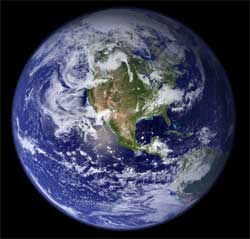 The Earth appears to be a more active and dangerous planet than before. This conclusion is based on reports from the media, which reference various recent natural disasters. However, a broader perspective reveals that it is not Mother Nature that has altered the climate, but rather these changes are influenced by human actions.
The Earth appears to be a more active and dangerous planet than before. This conclusion is based on reports from the media, which reference various recent natural disasters. However, a broader perspective reveals that it is not Mother Nature that has altered the climate, but rather these changes are influenced by human actions.
With the failure to develop additional land and enhance soil fertility for agriculture, humans are increasingly impacting areas prone to natural disasters.
This has facilitated an increase in the intensity of natural disasters in regions that frequently experience events such as earthquakes and storms, resulting in significant material damage and loss of life.
Meanwhile, when organizing the major natural events that cause fatalities within any given year, the death toll from nature has undergone significant fluctuations.
How We Have Died
This year, approximately 61,000 people have died due to natural disasters, with around 50,000 victims of the recent 7.6 magnitude earthquake in Pakistan on October 7. Correspondingly, in 2004, 60% of total deaths from natural disasters were victims of the tsunami in the Indian Ocean.
Debarati Guha-Sapir, director of the Disaster Epidemiology Research Center in Brussels, Belgium, stated that the distribution of natural disasters in 2005 mirrored that of 2004. Nevertheless, Guha-Sapir cautioned that it is still early to make accurate comparisons between the two years, noting that the tsunami on December 6 had struck Indonesia, claiming 130,000 lives. Other natural disasters in 2005 that severely impacted human lives include:
– A severe earthquake of 8.7 magnitude struck Indonesia on March 28, resulting in over 1,600 deaths.
– Hurricane Katrina, which hit the Gulf Coast at the end of August, claimed over 1,200 lives.
– Hurricane Stan, which caused flooding in countries along South America, led to 1,153 deaths as it made landfall on October 4.
Hurricane Katrina, estimated to have caused about $200 billion in damage due to its devastation, is the most costly natural disaster of the year. It is also the most damaging natural disaster in U.S. history.
These statistics overshadow many comparisons with annual deaths caused by war, famine, and the spread of diseases.
The Increase in Natural Disasters
According to the U.S. Office of Foreign Disaster Assistance (OFDA), CRED has maintained a database of emergency disasters known as EM-DAT. An event is classified as a natural disaster if it kills 10 or more people or injures at least 100 individuals, displaces people, or requires evacuation.
An event will also be included in the database if a country declares it a natural disaster or if the event forces the country to make an international appeal for assistance.
According to the EM-DAT emergency natural disaster database, the total number of declared natural disasters has steadily increased over recent decades, from 78 disasters in 1970 to 348 disasters in 2004.
Based on media reports and developments in communication, Guha-Sapir noted that the distribution of disasters across regions has not followed a natural pattern. Another basis for evaluation is that starting in the 1980s, organizations like CRED and the U.S. International Development Agency began actively monitoring natural disasters.
Guha-Sapir mentioned that approximately two-thirds of the increase is due to natural factors, with the rise attributed to meteorological disasters—hydrometeorological. These disasters include droughts, tsunamis, hurricanes, tropical storms, and floods, which have been increasing compared to over 25 years ago.
In 1980, there were only around 100 natural disasters per year, but this number has risen to over 300 disasters annually since 2000.
In contrast, geological disasters such as volcanic eruptions, earthquakes, landslides, and avalanches have remained consistent over recent decades.
What Will Happen Next?
Scientists believe that the rise in hydrometeorological disasters is a natural result of the interplay between natural elements and human-created factors. Global warnings indicate a rise in temperatures across the continents and the atmosphere, affecting the intensity of storms.
Changes in natural patterns over the decades, in terms of frequency and intensity of storms, are also believed to be influenced by non-natural factors, as unusual temperature variations occur in broad currents of warm water in the eastern Pacific Ocean. The El Niño and La Niña phenomena are two well-known occurrences attributed to these changes.
Humans also increase their impact on nature through rapid and unplanned urbanization in flood-prone areas. This heightens the likelihood of flash floods and coastal flooding devastating urban and rural communities.
According to a report by the World Bank in March, more than 160 countries have over a quarter of their populations living in areas with one or more natural disasters that result in a high casualty rate.
Taiwan is ranked among the most disaster-prone areas on Earth, with 73% of its land area and total population facing three or more threats.



















































